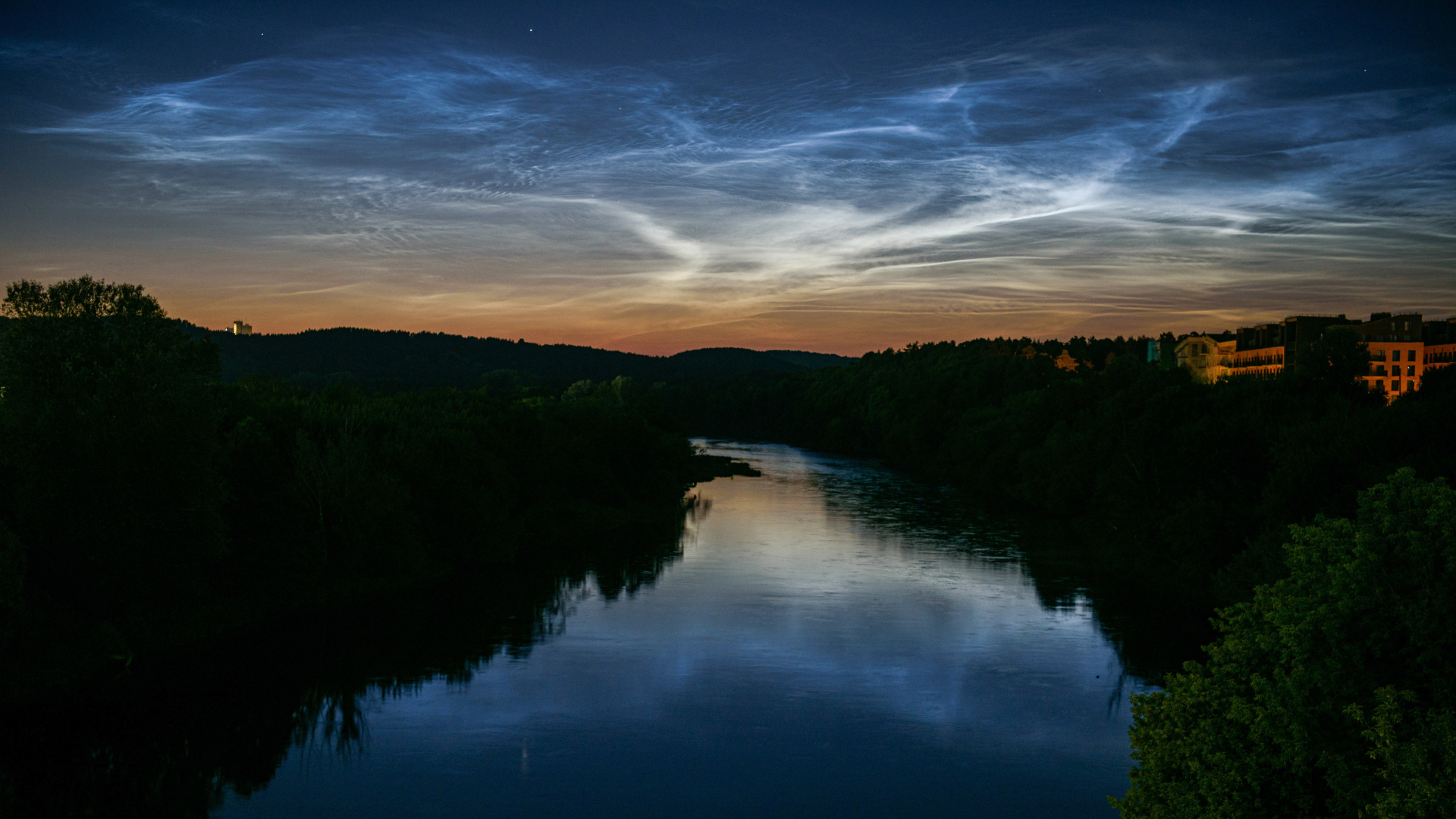Cancer constellation: Facts about the crab in the zodiac
Here we explore the dimmest zodiac constellation.
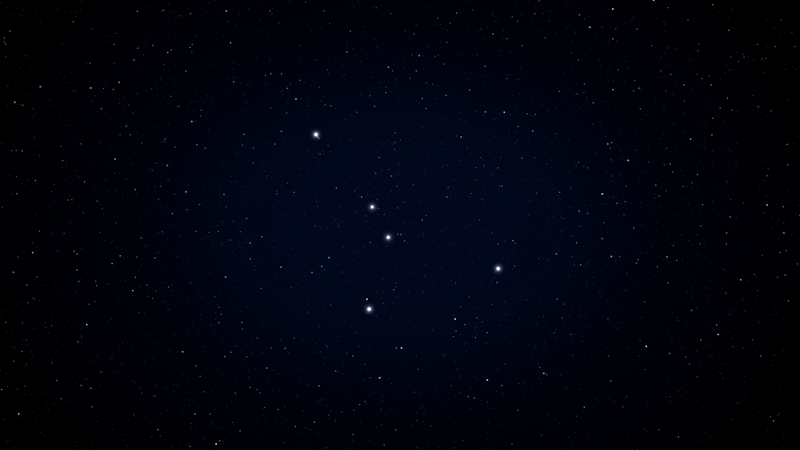
Cancer, the crab, is the dimmest of the 12 zodiac constellations, yet it contains one of the brightest star clusters, the Beehive Cluster, as well as stars with orbiting planets, according to Constellation Guide.
The ancient Greek astronomer Ptolemy first cataloged the constellation in the second century. It is associated with a crab that bit the hero Heracles (Hercules) in Greek mythology. Per the myth, the goddess Hera, an enemy of Heracles, placed the crab in the night sky, according to EarthSky.
Related: What's your zodiac sign? (It may not be what you think it is)
Where is Cancer?
In both hemispheres, Cancer is most visible in March, April and May. Because the constellation is so dim, it shows up best in dark areas or during a new moon. Although Cancer disappears from the Northern Hemisphere in July and August, it's visible at least part of the year from anywhere in the world except Antarctica, according to Little Astronomy.
Because Cancer is so faint, it might help to first locate Castor and Pollux, the two brightest stars in the constellation Gemini, and Regulus, the brightest star in the constellation Leo, according to EarthSky. To find Regulus, you can first look for the Big Dipper, according to Little Astronomy, the common group of stars that looks like a drinking gourd and is almost exactly north in the Northern Hemisphere. If you were to draw a line from the bottom of the "gourd," it would point at Regulus.
To find Castor and Pollux, imagine drawing a line from the "handle" part of the Big Dipper through its "gourd." That line would eventually reach Pollux, with the equally brilliant Castor close by. Cancer forms a sort of upside-down Y shape in the middle of these bright stars, formed by just five main stars. The brightest and easiest to see are Delta Cancri, Acubens and Altarf (Beta Cancri), which form the triangle at the bottom of the constellation.
Cancer observing targets
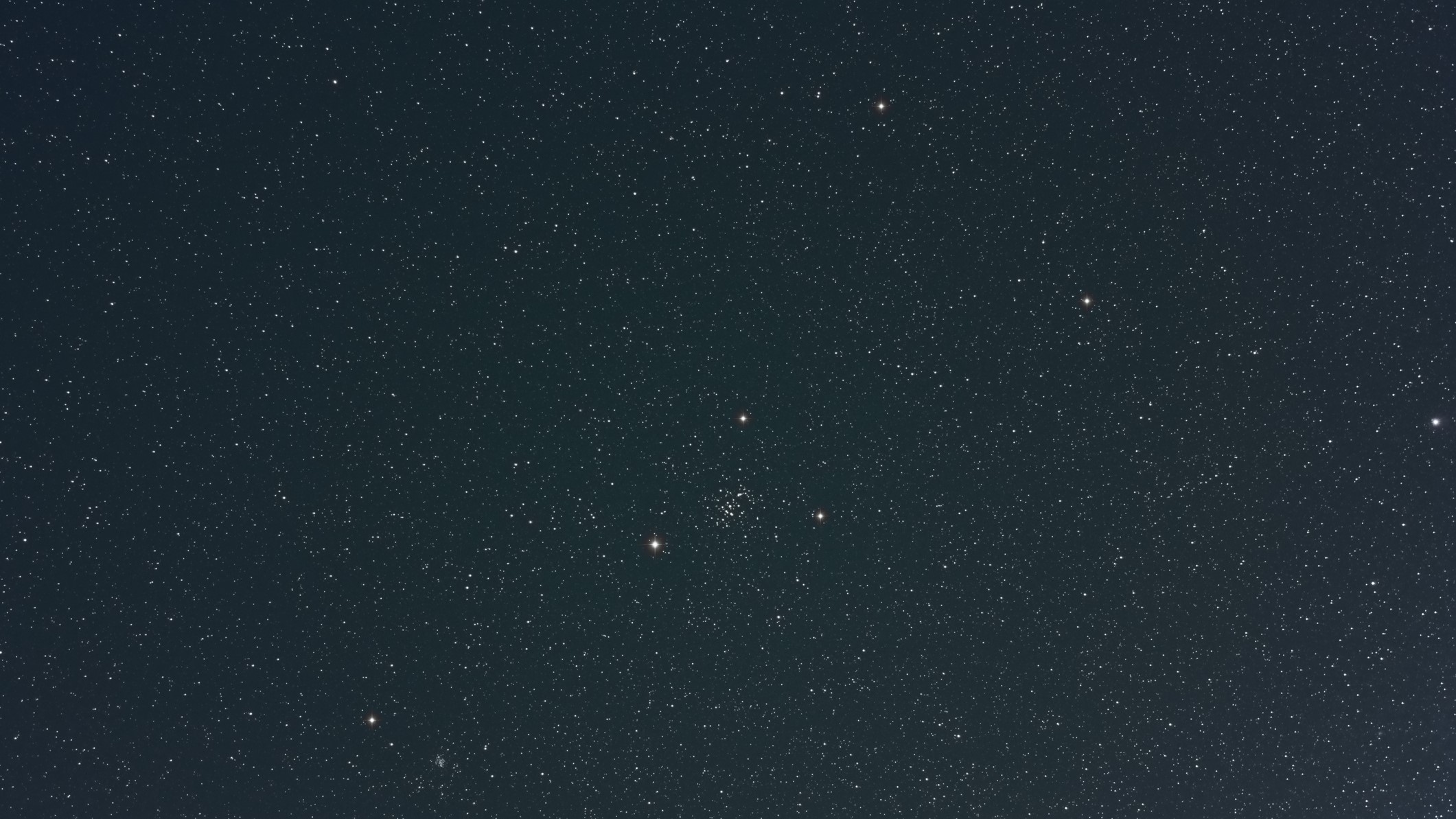
Though very dim overall, Cancer contains several targets for astronomical observation, including one of the brightest and nearest star clusters to Earth. While some targets are visible in dark skies even with the unaided eye, others require a telescope or binoculars to observe. If you need equipment, our best binoculars and best telescopes guides may help.
Jargon buster
Magnitude: An object's magnitude tells you how bright an object appears from Earth. In astronomy, magnitudes are represented on a numbered scale. The lower the number, the brighter the object. For example, an object with a magnitude of -1 is brighter than an object with a magnitude of 2.
Right ascension (RA): Right ascension is to the sky what longitude is to Earth's surface, corresponding to east and west directions. It's measured in hours, minutes and seconds, since, as Earth rotates, we see different parts of the sky throughout the night.
Declination (Dec): Declination tells you how high the object will rise in the sky. Like Earth's latitude, declination measures north and south. Its units are degrees, arc minutes and arc seconds. There are 60 arc minutes in a degree and 60 arc seconds in an arc minute.
The Beehive Cluster
Magnitude: 3.1
Approximate distance from Earth: 577 light-years
Location: 08h 40m 22s (right ascension), +19° 40' 19" (declination)
Also called Praesepe ("the manger" in Latin), the Beehive Cluster is one of the closest star clusters to Earth, according to Constellation Guide. With about 1,000 stars, it is also one of the most populated. In dark skies, the cluster is visible to the naked eye and has been known for as long as the Cancer constellation; it was also identified by Ptolemy.
Messier 67 (King Cobra Cluster)
Magnitude: 6.9
Approximate distance from Earth: 2,610 to 2,930 light-years
Location: 08h 51m 20s (right ascension), +11° 48' 42" (declination)
Researchers estimate that Messier 67 is between 3.2 billion and 5 billion years old, making it one of the oldest known open star clusters, according to Constellation Guide. You can observe it with the help of a small pair of binoculars, according to The Sky Live. Almost all of the stars in this cluster are roughly the same age and distance from Earth, making Messier 67 a frequent target for scientists studying stellar evolution.
NGC 2775 (Caldwell 48)
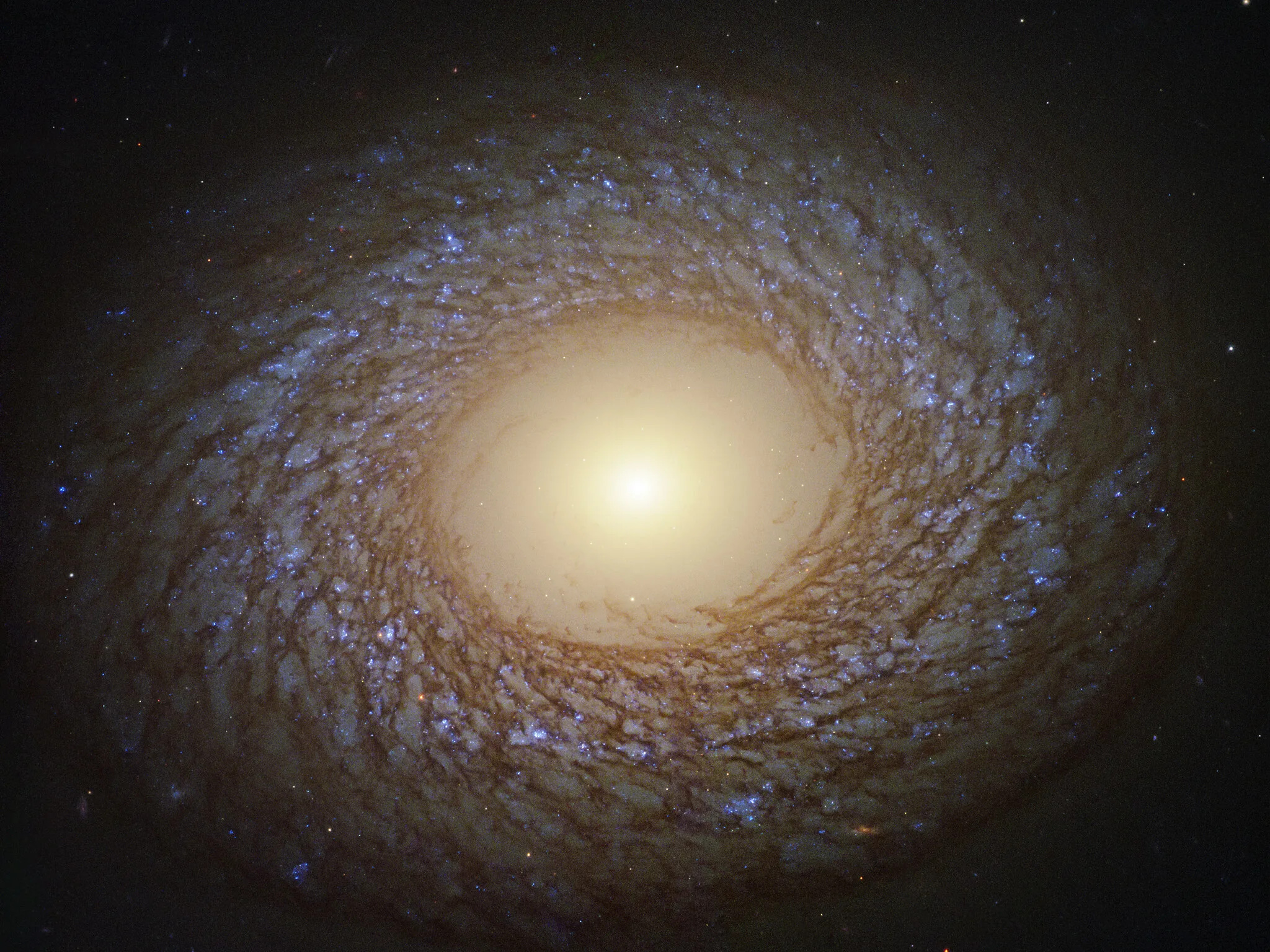
Magnitude: 10.48
Approximate distance from Earth: 67 million light-years
Location: 09h 10m 19s (right ascension), +07° 02' 16" (declination)
The "arms" of this spiral galaxy contain areas of recent star formation, which researchers have studied to find out more about how stars form. In contrast, its center contains older stars. Although this galaxy is visible in a dark sky with the help of a small telescope, its feathery arms are difficult to capture even with a large telescope, according to NASA.
NGC 2608
Magnitude: 13.2
Approximate distance from Earth: 93 million light-years
Location: 08h 35m 17s (right ascension), +28° 28' 24" (declination)
Like our own galaxy, the Milky Way, NGC 2608 is a barred spiral galaxy, so called because of the bar-like appearance of its arms and center. It has been the location of two relatively recent supernovas. One of these violently exploding stars peaked in December 1920, while another was spotted in May 2001, according to Constellation Guide. You can see this galaxy using a telescope with an aperture of 10 inches (25 centimeters), according to The Sky Live.
Cancer exoplanets
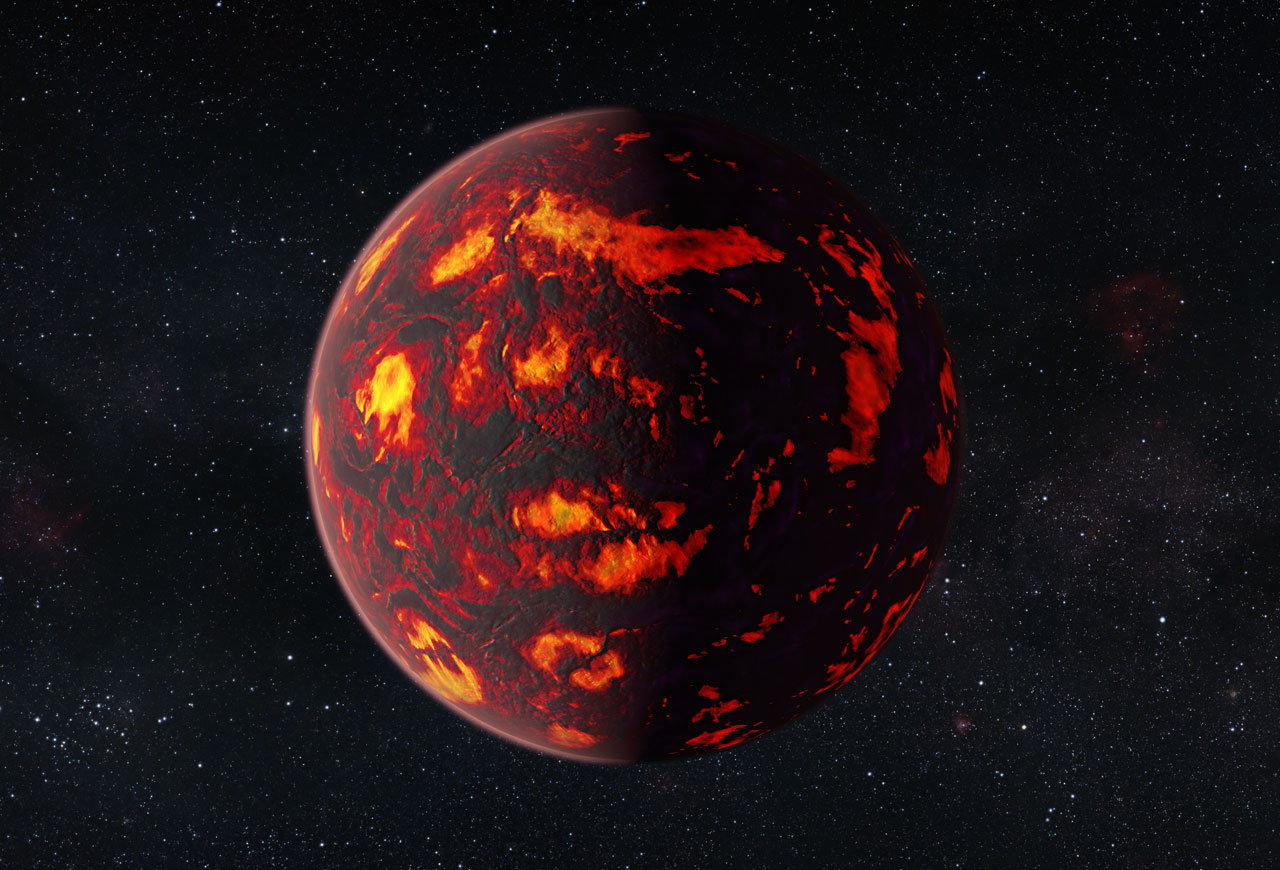
Cancer's best-known exoplanets orbit the star 55 Cancri A, also called Copernicus. This planetary system is one of only four, including our solar system, known to have five or more planets. One of the planets — 55 Cancri e, or Janssen — is a terrestrial planet (though its surface is mostly lava), according to NASA, with about eight times the mass of Earth. The other planets are thought to be gas giants about the size of Jupiter, according to Constellation Guide.
Two other planets in Cancer are Pr0201b and Pr0211b, the first two planets discovered in the Beehive Cluster, according to NASA. Both orbit sunlike stars and are "hot Jupiters," or gas giants like Jupiter. However, they are much closer to their stars and orbit them every few days.
Cancer in mythology
The constellation Cancer represents the giant crab that attacked Heracles during the second of the 12 labors he performed as penance for killing his family. It was sent by the jealous goddess Hera to thwart Heracles as he battled the water serpent Hydra, but he killed it with his club.
In astrology, which is not a science, Cancer is the fourth sign of the zodiac and represents those born between June 20 and July 22. It is considered a water sign and is one of the four cardinal signs, which indicate a change of season when the sun makes its annual passage into them.
Additional resources
To find out more about the exoplanet 55 Cancri e, see this article in Universe Today. You can read more about the discovery of the first planets identified in the Beehive Cluster in this article from NASA's Jet Propulsion Laboratory. The Canadian Space Agency has some helpful resources to help you make the most out of your skywatching venture.
Bibliography
McClure, Bruce, “Meet Cancer the Crab and its Beehive cluster,” EarthSky, March 11, 2023. https://earthsky.org/constellations/cancer-heres-your-constellation/
Lawrence, Pete. “A guide to the constellation Cancer,” BBC Sky at Night Magazine, April 9 2023. https://www.skyatnightmagazine.com/advice/cancer-constellation
Constellation Guide, “Cancer Constellation.” https://www.constellation-guide.com/constellation-list/cancer-constellation/
The University of Texas McDonald Observatory, “Cancer, the Crab,” StarDate, 2022. https://stardate.org/astro-guide/cancer-crab-0
Johnson, Ian J., “Cancer Constellation: Stars, Myth, and Location,” Planet Guide, March 13, 2023. https://www.planetguide.net/cancer-constellation/
Stone, Elena, “How and When to Find the Cancer Constellation,” Little Astronomy, December 9, 2021. https://littleastronomy.com/how-and-when-to-find-the-cancer-constellation/
NASA Exoplanet Exploration. “55 Cancri e.” https://exoplanets.nasa.gov/exoplanet-catalog/7005/55-cancri-e/
NASA Jet Propulsion Laboratory. “Bees in the Beehive,” September 15, 2012. https://www.jpl.nasa.gov/images/pia15801-bees-in-the-beehive
The Sky Live. “Messier 44 (Praesepe Cluster) - Open Cluster in Cancer.” https://theskylive.com/sky/deepsky/messier-44-praesepe-cluster-object
The Sky Live. “Messier 67 (King Cobra) - Open Cluster in Cancer.” https://theskylive.com/sky/deepsky/messier-67-king-cobra-object
The Sky Live. “NGC 2775 - Spiral Galaxy in Cancer.” https://theskylive.com/sky/deepsky/ngc2775-object
The Sky Live. “NGC 2608 - Spiral Galaxy in Cancer.” https://theskylive.com/sky/deepsky/ngc2608-object
Join our Space Forums to keep talking space on the latest missions, night sky and more! And if you have a news tip, correction or comment, let us know at: community@space.com.
Get the Space.com Newsletter
Breaking space news, the latest updates on rocket launches, skywatching events and more!

Rebecca Sohn is a freelance science writer. She writes about a variety of science, health and environmental topics, and is particularly interested in how science impacts people's lives. She has been an intern at CalMatters and STAT, as well as a science fellow at Mashable. Rebecca, a native of the Boston area, studied English literature and minored in music at Skidmore College in Upstate New York and later studied science journalism at New York University.
- Kim Ann ZimmermannSpace.com Contributor
- Elizabeth HowellFormer Staff Writer, Spaceflight (July 2022-November 2024)
